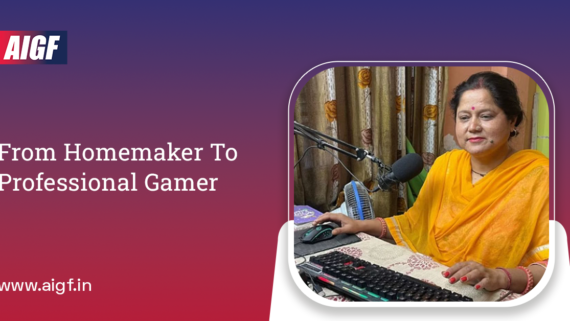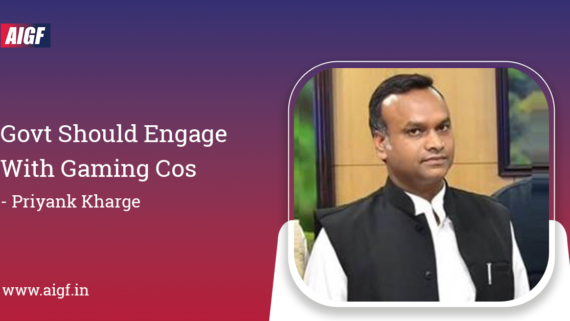In 2010, there were only 20 million users in the growing video gaming industry in India. In 2020, the number has increased by 22 times, with 450 million users playing various types of casual, hyper-casual, classic, mid-core, and hardcore games. Over the most recent five years, the industry has seen a wonderful turn of events and is anticipated to significantly increase in worth to $3.9 billion by 2025.
A Lot Left To Play: The Under-Researched Indian Gaming Landscape
For a country like India, it’s surprising how little is known about the gaming industry. In the past few years, a handful of gaming conferences and events have been dominated by mobile gaming and game-based learning. But if we look closely, there’s a lot more going on in the background. The Indian gaming landscape is ripe for discovery and opportunity. Indians are the biggest video game consumers in Asia. But the numbers tell only a small part of the story. The gaming industry in India is bigger than it seems and is constantly evolving.
In 2010, there were only 20 million users in the growing video gaming industry in India. In 2020, the number has increased by 22 times, with 450 million users playing various types of casual, hyper-casual, classic, mid-core, and hardcore games. Over the most recent five years, the industry has seen a wonderful turn of events and is anticipated to significantly increase in worth to $3.9 billion by 2025.
Despite the gigantic notoriety of video games all over India, there is still a shortage of understanding in the fields of video game industry development and top-to-bottom investigation of video games and strategy mediations. With its quick rise in the industry in India, research on its development, suggestions, and potential investigation is essential. Video game producers in India today are being pushed to offer a new and comprehensive foundation of gaming, creating some space from already existing well-known games, violence, and generalizations. An investigation can also help in understanding the role that regulations and innovation strategies play in controlling and enabling productive video gaming in India. Utilizing bibliometric examination, this article features the scarcity of academic exploration in the video gaming scene in India; topics and weaknesses in the existing literature; and proposes scope for fresher and more holistic examination.
While research on popular culture and traditional media, for example, movies, books, music, and TV series, has gotten some push in India over the last couple of years, video games keep on being an under-explored caveat. Basic examination of pop culture is frequently used to figure out a shift in cultural and philosophical accounts in the country and, when woven with the scrutiny of gender, class, and caste, uncovers the beat of individuals. Because they effectively empower the user’s cooperation in their biological system, video games provide clever insight into the investigation of cultural consumption.
In contrast to movies, music, and TV series, the players are frequently welcomed (though in restricted ways) to approach their own stories and pick their actions, avatars, and groups. Gamers embody the characters in the games and their powers and obligations. This dynamic participation in fixed planned conditions (in games like Clash of Clans) or self-made conditions (in games like Second Life) can yield fascinating insights into what types of games people like to play, characters they like to embody, and who is forgotten or generalized and why. Various investigations feature the force of embodiment and complete immersion in video game accounts and how they can treat their players. While a recent report on the educational potential of this involved insight and how it tends to be utilized productively, numerous others dread the expansion in brutality and detachment of players who participate in forceful and militant games.
Findings from Bibliometric Analysis
The technique for bibliometric examination was taken on for its capacity to deal with a lot of scientific literature and its true capacity for factual investigation. A keyword search of titles and concepts on the Web of Science was used to track down existing distributions from 2010 onwards. Scientific literature was separated with an emphasis on video games, PC games, and Playstation.
Within the predefined period, the inquiry yielded a dataset of 20,834 articles. The search term was additionally changed by including distributions for India (as a nation of study). Just 46 articles (0.22%) were recovered. After an exhaustive review of those distributions, the last dataset just held back 18 exploration articles concerning video gaming in India. This means that out of every 1,200 articles composed around the world, only one is in India. This shows that regardless of the remarkable development of video game users in India, research has not found the progression it might bring to its young users. The manual check showed that 8 out of the 46 articles were dishonestly credited to India, while 20 were misleading up-sides (primary spotlight not on video games). Countless misleading advantages were a result of the non-refinement of keyword search, so we don’t pass up important articles.
Existing Literature on India Reveals Themes and Gaps
The bibliometric analysis permitted us to group existing literature into applicable subjects. The majority of the papers are concerned with influences on physical and mental health. Such investigations are focused on the effects of video gaming on its most important stakeholders: its players. Researchers feature the adverse consequences of continually sitting before digital screens on weight, vision, and the general prosperity of the body. Many others have observed an increase in aggression, a decreased ability to focus, and a desensitization to real-life violence in school-aged children who regularly play violent video games. Some additionally study the habits of youngsters who play video games.
Education is another generally concentrated topic. The educative capability of video gaming, and how it very well may be used to stimulate creativity and idea lucidity in students, is being tended to. A less generally explored niche is the study of gender and race in video games in India. Numerous researchers play chosen games and note the development of various genders (assuming that there are any), uncontrolled sexism, and voyeurism in women’s bodies. In Indian examinations, racism is studied from the perspective of post-frontier masculinities and fetishization of white women. Be that as it may, the games considered are ‘casual’ or ‘hyper-casual’ ones and not ‘hard-core’ ones (games that require high commitment and investment of time and learning). The cultural discord in Indian audiences, which accompanies playing games that are set in magnificent settings or different nations, is under-researched.
Indian origin games, on the other hand, use the popularity of such games to advertise their ‘Indian-ness’ and claim to address ‘Indian’ individuals with religious and legendary tropes. Regardless, and in this manner, they reverberate casteist subjects of prevalent Hindu stories and mythological characters and obscure different accounts. For example, a well-known Indian game called Raji, which won different renowned awards, uses the story of Goddess Durga killing Mahishasura, who is depicted as an evil presence in the mainstream media. This portrayal is uninformed about his job as a divine figure for different lower caste communities. This brings up issues about which ‘Indian-ness’ is viewed as real in popular culture and who are the producers behind it.
In 2010, we didn’t go over a solitary research article on the Web of Science tending to strategy development or intervention in video games. This is astonishing because numerous different nations have started to set prospective guidelines for controlling violence, awful portrayal, and youngsters’ use of video games. This can be credited to the fact that video games were not as popular in India during this time, and the focus of the guidelines was restricted to cyber-bullying and erotic entertainment. Be that as it may, with regards to the pandemic and the sharp spurt in video gaming, this moment is the perfect opportunity to come up with prospective intercessions in the scene to encourage quality planning, creation, and use of video games.
Conclusion
The web and digital innovation have impacted our existence as a whole and have arrived even in the most rural regions of the planet. In this unique situation, gaming has become an intense site of activity in India, with more than 450 million gamers timing in an ever-increasing number of hours playing. The appreciation of violent and cliché accounts and the ramifications of commitment to them have not been studied adequately, particularly in “hard-core” games which utilize broad story building. Other than this, the attention to approach and intercession is non-existent, besides in a couple of contexts like fantasy sports and gambling games, which have just been presented as of late. Truth be told, just 0.22% of articles in the gaming industry from 2010 till date were in India. We contend that an inside and out examination (examination which is done by immersing in the game and noticing its specific attributes, figuring out how the gender, race, caste, violence, and different characters are addressed) of some of the most ordinarily played ‘hard-core’ games in India is missing, and will yield novel bits of knowledge for policymakers, as well as video game developers, players, and different stakeholders in the video gaming scene, like guardians and teachers. Some stakeholders who are leading broad industry research are video game developers and firms, for example, KPMG in the global private industry research sector. The Indian scholarly community, think tanks, and consultancy firms should likewise dynamically support progress in research in India.
Credit: Observer Research Foundation











Comments
Comments are closed.